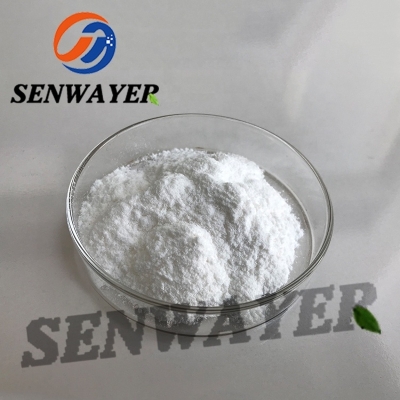On the development history of "from measurement to weighing instrument"
-
Last Update: 2013-11-01
-
Source: Internet
-
Author: User
Search more information of high quality chemicals, good prices and reliable suppliers, visit
www.echemi.com
Weighing machine is an important part of measuring instruments In the past, people used to call measurement the "measure" The so-called "degree" refers to measuring the length of objects with a ruler (such as ancient bone ruler, tooth ruler and bamboo ruler, wood ruler, tape ruler, steel ruler, etc.) which will come out gradually later; the so-called "measure" refers to measuring the volume of objects with a container (such as ancient combination, lift, bucket, Dendrobium and measuring barrel, measuring cup, etc.); the so-called "balance" refers to measuring the weight of objects It should start at the end of the primitive society According to historical records, it has been more than 4000 years since then At that time, there was an exchange of goods, but the measurement method was based on seeing and touching; it was used as an instrument to measure weight --Weighing instrument, Zui appeared in Xia Dynasty as early as in China; the principle of leverage was mastered in spring and Autumn period and Warring States period; in the middle of Warring States period, scales and weights were widely used to weigh gold in central Chu area, but the measurement standards were different and confused for quite a long time After Qin unified the world, Shang Yang reform was implemented in 26 years of Qin Shihuang (221 BC), and the measurement standards were unified; In the Song Dynasty, a weighing scale with an accuracy of 1 cm (40 mg) appeared, indicating that the weighing scale at that time had a considerable technical level Weighing apparatus is produced and developed in the process of commodity exchange The scales used by Zui are primitive scales About 5000 B.C., an equal arm scale was used in Egypt (Fig 1) It is to set a fulcrum at the middle point of the simple lever, place the tested object on the plate (hook) at one end of the lever (right end in the figure), and place the objects with the same shape and mass one by one on the plate at the other end (left end in the figure) When the device is balanced, it means that the mass of both sides is equal, and the mass of the tested object at the right end can be inferred from the number of objects at the left end China's measurement system began with the law of "yellow bell" in 2500 BC According to records, "the degree is based on the length of Huangzhong, the quantity is based on Huangzhong's Lun, and the balance is based on the weight of Huangzhong" The yellow bell has been lost In Xia Dynasty, China began to use trade-offs as weighing instruments Weight is equal to weight, which means lever A small hole in the middle of the lever is used as a fulcrum, and hooks are hung at both ends of the lever, while the weighed object is hung, and the right is hung at the same time Each trade-off has a set of rights The weight of weight is increased one by one to weigh different weights Wooden steelyard appeared in Han Dynasty and has been used for more than 2000 years since then In the 18th century, the Scottish chemist J Blake applied the knife and the knife bearing to the balance, thus making the weighing apparatus In 1831, American T Fairbanks invented platform scale, which integrated the advantages of unequal arm scale and balance, and made various mechanical scales tend to be perfect In the middle of the 20th century, a simple electronic weighing instrument appeared, which made weighing instrument step into the electronic era The combination of microprocessors and load cells has led to a change in the field of weighing Since then, microprocessors have been widely used in weighing, especially in dynamic weighing, which has basically replaced the original complex computing system With the continuous development of microelectronics technology and the emergence of large-scale and ultra large scale integrated circuits, weighing and process control functions can be combined into the same electronic unit In the 1980s, electronic weighing apparatus has been widely used in various fields from micro weighing to large-scale professional weighing Weighing apparatus products have developed to thousands of specifications, with static accuracy of more than 0.1% and dynamic accuracy of 1% - 0.2% There are about 250 weighing apparatus manufacturers in China, which can produce large scale special weighing apparatus in batches in 19 categories, more than 150 varieties and more than 500 specifications The production of mechanical weighing apparatus has a considerable scale, and the electronic weighing apparatus has formed an annual capacity of tens of thousands of sets Weighing scale classification: weighing scale can be divided into mechanical scale, electronic scale and electromechanical combination scale according to structural principle Mechanical scale can also be divided into lever scale (including equal arm lever scale, i.e narrow scale, unequal arm lever scale) and spring scale Weighing apparatus can also be divided into non automatic weighing apparatus and automatic weighing apparatus The main types of scales are balance, steelyard, desk scale, platform scale, ground scale, ground scale, track scale, loader electronic scale, belt scale, postal scale, hanging scale, ingredient scale and bag scale.
This article is an English version of an article which is originally in the Chinese language on echemi.com and is provided for information purposes only.
This website makes no representation or warranty of any kind, either expressed or implied, as to the accuracy, completeness ownership or reliability of
the article or any translations thereof. If you have any concerns or complaints relating to the article, please send an email, providing a detailed
description of the concern or complaint, to
service@echemi.com. A staff member will contact you within 5 working days. Once verified, infringing content
will be removed immediately.







